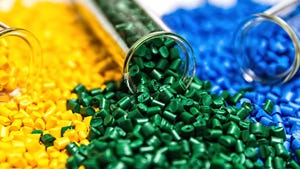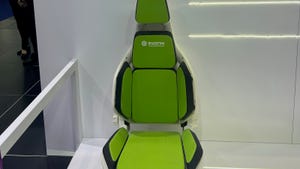Soft Robotics Enable 3D Bioprinting Inside Body
The tiny, flexible 3D bioprinter can be inserted into the body like an endoscope and deliver multilayered biomaterials onto the surface of internal organs and tissues.
May 9, 2023
Back when nanotechnology was at the "peak of inflated expectations," to borrow a stage from the Gartner hype cycle, one would come across wild speculation about where this emerging technology would boldly go. One common speculation was that nanobots one day would protect and serve from the inside, patrolling arteries and alerting authorities — i.e., medical professionals — if they spot any suspicious activity. We’re still not there and won’t be for a long time, but researchers at the University of New South Wales (UNSW) in Australia have developed a tiny prototype robot that, they say, can 3D print living cells onto internal organs. You heard right — it would do this from inside the body.
Research conducted at the UNSW Medical Robotics Lab has produced a tiny, flexible 3D bioprinter that can be inserted into the body just like an endoscope and directly deliver multilayered biomaterials onto the surface of internal organs and tissues. Led by Dr Thanh Nho Do and his PhD student Mai Thanh Thai, the research is detailed in a paper recently published in Advanced Science.
The F3DB proof-of-concept device features a maneuverable swivel head that deposits the bio-ink. The head is attached to the end of a long, flexible robotic arm, and all of the parts can be controlled externally, explains Neil Martin in an article published on the UNSW website.
Device could be out of the lab in five years
The technology could be used by medical professionals to access hard-to-reach areas inside the body via small incisions or natural orifices within five to seven years, according to the researchers.
Do and his team have tested the device inside an artificial colon and have 3D printed differently shaped materials on the surface of a pig’s kidney.
Unlike existing bioprinting techniques, which require inserting biomaterials via large open-field surgery, the flexible 3D bioprinter delivers the materials directly to the target tissue or organs via minimally invasive surgery, explained Do. “This system offers potential for the precise reconstruction of three-dimensional wounds inside the body, such as gastric wall injuries or damage and disease inside the colon,” said Do in the article.
Similar in diameter to an endoscope
The smallest F3DB prototype produced by the team at UNSW thus far has a diameter similar to commercial therapeutic endoscopes — approximately 11 to 13 mm — which is small enough to be inserted into a human gastro-intestinal tract. The researchers say it could easily be scaled even smaller for future medical uses.
The device features a three-axis printing head directly mounted onto the tip of a soft robotic arm, writes Martin on the UNSW site. The hydraulically operated arm can bend and twist as needed and can be fabricated at any length required. The stiffness can be finely tuned using different types of elastic tubes and fabrics.
The printing nozzle can be programmed to print pre-determined shapes, or operated manually where more complex or undetermined bioprinting is required. In addition, the team utilised a machine learning–based controller that can aid the printing process.
To further demonstrate the feasibility of the technology, the UNSW team tested the cell viability of living biomaterial after being printed via their system.
Experiments showed the cells were not affected by the process, with the majority of the cells observed to be alive post-printing. The cells then continued to grow for the next seven days, with four times as many cells observed one week after printing.
Swiss Army knife of surgical tools?
The F3DB potentially also could be used as an all-in-one endoscopic surgical tool to perform a range of functions. The printing head’s nozzle can be used as an electric scalpel to first mark and then cut away cancerous lesions, for example. Water can be directed through the nozzle to simultaneously clean any blood and excess tissue from the site, while faster healing can be promoted by the immediate 3D printing of biomaterial while the robotic arm is still in place.
The next stage of development for the system, which has been granted a provisional patent, is in vivo testing on living animals to demonstrate its practical use.
The researchers also plan to implement additional features, such as an integrated camera and real-time scanning system, that would reconstruct the 3D tomography of the moving tissue inside the body.
About the Author(s)
You May Also Like




